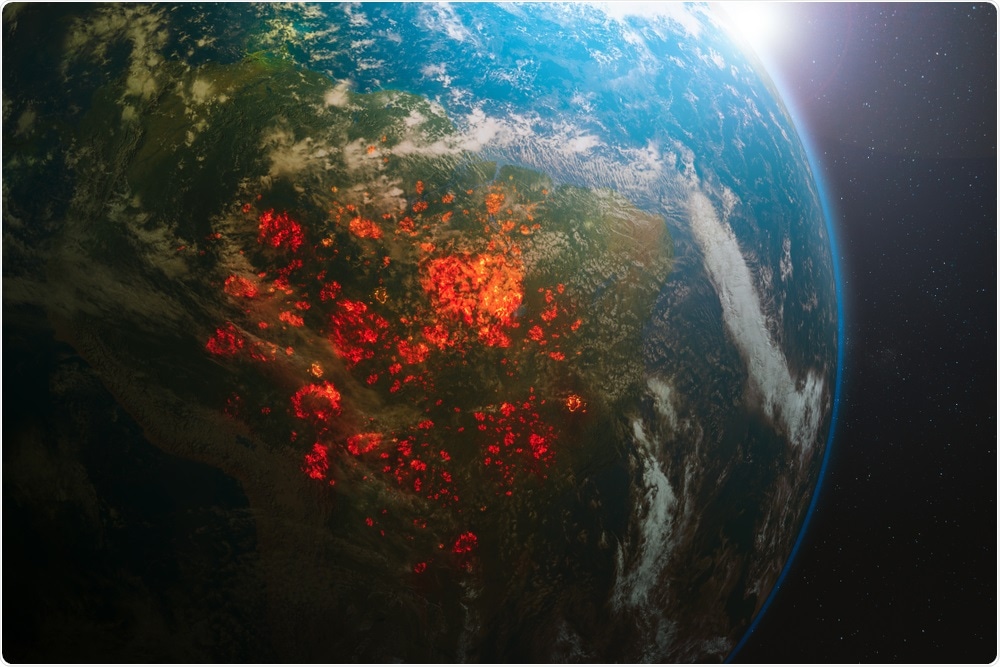A "step-change" in conservation is needed in order to help save species from extinction in the future, according to an academic at the University of East Anglia (UEA).

Image Credit: OSORIOartist/Shutterstock.com
Professor of evolutionary genetics Cock van Oosterhout calls for the smart use of genomic data to make populations more resilient to future genetic drift and inbreeding and proposes a new 'road map' for what needs to be done in conservation to achieve this.
Decades of work by conservation geneticists and international treaties such as the UN Convention on Biological Diversity have attempted to improve the status of biodiversity and maintain genetic diversity across the various forms of life on Earth.
However, according to the most recent global assessment report in 2019, the decline in biodiversity is only accelerating, and one million species are threatened with extinction. The Red List of the International Union for Conservation of Nature (IUCN) also shows that 44.3% of species are currently in decline.
Contributing to this, recent fires in the Amazon and Australia have transformed vast swathes of habitat, climate change places additional pressures on populations, and globally, approximately 75% of the infrastructure planned for 2050 has yet to be built.
Writing in the journal Nature Ecology & Evolution, Prof van Oosterhout, of UEA's School of Environmental Sciences, warns that more needs to be done than just minimizing the loss of biodiversity and genetic variation.
Over the last half-century, conservation geneticists have analyzed genetic variation and focused on maintaining this in threatened species.
While this is important, Prof van Oosterhout says they have ignored an essential part of the genome that is devoid of variation, identical across different species. These are the DNA nucleotides that have been conserved over millions of years of evolution.
These parts of the genome are under strong selection and if mutations occur in these so-called 'ultra-conserved elements', they are bad for the fitness of individuals. When a population declines these mutations become exposed by inbreeding, so the already struggling population is even more at risk.
However, genomics can reveal the presence of this 'mutation load' at the molecular level using tools developed for humans and model animals, such as mice and rats.
Prof van Oosterhout said: "Given that these studies all examine the same ultra-conserved elements, the mutation load can be directly compared between species. Hence, the analyses developed in human genomics could be universally applied across the tree of life, making them very promising tools for conservation genomics.
We now know the DNA sequences of these ultra-conserved regions in the genomes of threatened species. This means that we can also identify the bad mutations when we sequence these individuals. This has become relatively cheap and it is quick."
Conservation genomics could also help to improve captive breeding in zoos. Rather than just minimizing the rate of inbreeding, studbook holders could use the mutation load data of individuals to take on the role of natural selection in the zoo environment.
"With that data and knowledge of which DNA sequences to look out for, we can select against these bad mutations even before they become 'exposed' by inbreeding," said Prof van Oosterhout.
"This would help to prevent - or even turn-back - the deterioration of gene pool of the often small zoo populations. Data on the mutation load could also be used to reduce the risk of inadvertently reintroducing harmful mutations into the wild during genetic rescue. Such genomics-informed conservation would make populations more resilient to genetic drift and inbreeding yet to come."
In his paper, Prof van Oosterhout suggests a method that avoids losing valuable genetic variation, an inevitable consequence of selection. It involves selecting the best two offspring of all breeding pairs, so the two with the lowest number of bad mutations.
This will reduce the mutation load, maintains the useful genetic variation, and would make the zoo population, and the species, more resilient against current and future inbreeding.
Prof van Oosterhout cautions that there is still work to do to make these genomic approaches reliable, practical tools for conservation. "We still don't know how the mutation load affects the fitness of individuals in the natural environment," he said.
"Translating this genomic data into metrics that are relevant to conservation is therefore urgently needed."
"Fortunately, with thousands of genomes currently being sequenced by consortiums, data is rapidly being generated. Together with the rich sample archives that have been collected for some of our threatened species over decades, such as the pink pigeon and the echo parakeet, this would help to translate genomic data into information that is relevant for conservation, for example around the fitness of individuals in their natural environment, and the viability of their populations.
We should be able to rank individuals, and species, according to their mutation load and relative levels of inbreeding, thereby improving the Red List of animals currently in decline."